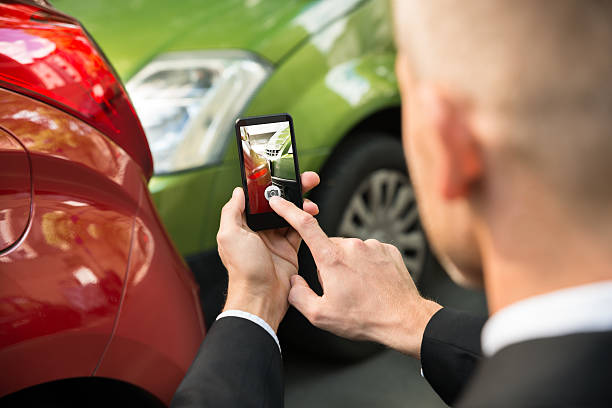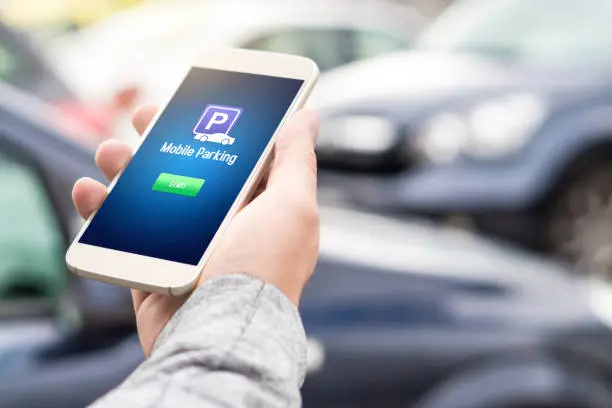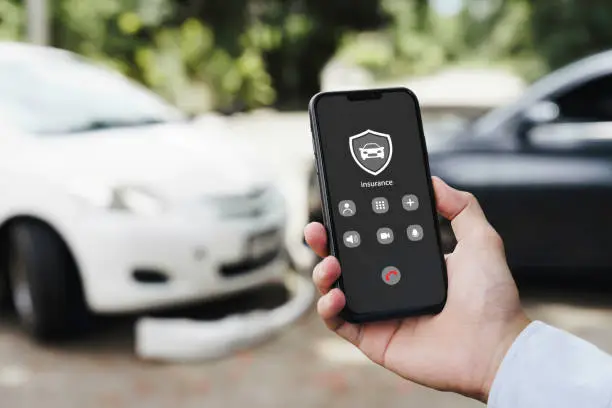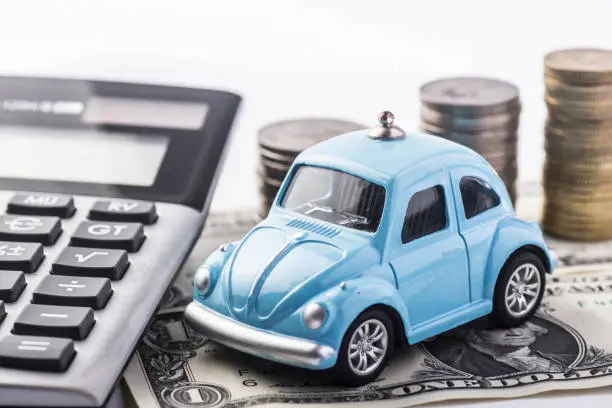
How Automatic Payments Work for Car Insurance Explained
Automatic Payments Work for Car Insurance Explained Paying car insurance bills every month can seriously be a headache especially when life gets busy and you simply forget. That’s where automatic payments step in to make your life easier. In this blog, I’ll explain what auto-pay really means in super simple terms, why so many people use it, and how it can actually save you from stress, late fees, and lapses in coverage.
We’ll also walk through how automatic payments work for car insurance behind the scenes like how money gets pulled from your account and what happens if the funds aren’t there. I’ll also share the pros and cons, how to set it up the safe way, and common mistakes to avoid. Whether this is your first time hearing about auto-pay or you just want to be sure you’re doing it right, this guide has everything you need clear, easy, and 100% beginner.

What Are Automatic Payments for Car Insurance?
Let’s start with the basics what are we even talking about?
Imagine if you never had to worry about forgetting to pay your car insurance bill. No alarms. No sticky notes. No “Oops, I missed the deadline!” moments. That’s exactly what automatic payments are for.
When you choose automatic payments for car insurance, your insurance company takes the money directly from your bank account or credit card on time, every time. You set it up once, and it runs by itself after that. It’s like putting your car insurance on cruise control!
What Does “Automatic Payment” Actually Mean?
Let’s break it down like we’re talking to a 5-year-old:
Imagine you have to give your friend $10 every month for a toy you borrowed. But sometimes, you forget. So, your smart friend says, “Hey! Let’s just set it up so the $10 comes from your piggy bank automatically every month. That way, you don’t have to remember, and I don’t have to remind you!”
That’s what automatic payments are! Once you set it up, the money goes from your account to your car insurance company without you having to do anything every month.
It’s super easy, super fast, and keeps your insurance running without missing a beat.
Why Do People Use Automatic Payments for Car Insurance?
There are three BIG reasons people love using auto-pay for car insurance:
- No more forgetting – Life is busy With auto-pay, your bill is always paid on time.
- No late fees – Missing a payment can lead to extra charges. Auto-pay saves you money.
- Keeps your coverage safe – If you forget to pay, your insurance could get canceled. That means no protection if you have an accident. Auto-pay keeps you covered always.
It’s like having a little helper who handles your payments so you don’t have to worry.

How Do Automatic Payments Work with Insurance Companies?
Behind-the-scenes: How money moves and your policy stays active
Alright, now that we know what automatic payments are, let’s look at how they actually work. It’s kind of like magic but with banks, buttons, and a bit of tech.
When you sign up for car insurance, your company offers an auto-pay option. You just need to tell them where to take the money from (your bank or card). Once that’s set, the system pulls money on your due date every month, like clockwork.
How Is the Payment Taken from Your Account?
You have a few simple options to choose from:
- Bank account (direct debit) – You give your insurance company your account and routing number. On your bill date, money is taken straight from your account.
- Credit or debit card – You provide your card details, and the company charges it every billing cycle.
- Online payment apps – Some companies also let you use PayPal or mobile wallets.
💡 Pro tip: You can usually pick a billing date that works best for you like just after payday.
The insurance company’s system checks your account/card on the selected date and takes the amount you owe automatically. It sends you a confirmation so you know the payment was made.
What Happens If You Don’t Have Enough Money on the Due Date?
Great question and super important to know
If your account doesn’t have enough money when the payment tries to go through, a few things might happen:
- Failed payment – The payment may bounce back (like a ball hitting a wall).
- Late fee charged – Some companies might add a small penalty.
- Second attempt – Many companies try again in a few days.
- Policy could get canceled – If the payment still doesn’t go through, your coverage might stop. That’s dangerous because you’ll be driving without protection!
But don’t worry most insurance companies will send a warning first. Some even give a grace period (a few extra days to pay).
💡 Quick Tip: Always keep a little extra money in your account around your payment date. It’s like putting a seatbelt on your payment.

Pros and Cons of Setting Up Auto Pay for Car Insurance
Automatic payments sound amazing, right? And for many people, they really are. But just like anything else, they’re not perfect for everyone. Let’s explore both the good and not-so-good sides so you can decide if it’s right for you.
Why Auto Pay Can Be Super Helpful
Imagine not having to remind yourself every month to pay your car insurance. You go about your day working, driving, relaxing and boom. Your payment is already handled. That’s one of the biggest reasons people love auto pay.
It’s not just about convenience. Auto pay also keeps your insurance active without interruption. If you’re even one day late, your policy could be at risk. But with automatic payments, it’s like putting your payments on autopilot.
And here’s something else: Some insurance companies give small discounts if you choose auto pay. They like it because it makes their system smoother, so they reward you with a little money off each month.
So yeah auto pay helps you:
- Save time
- Avoid late fees
- Stay protected
- Possibly save money too
It’s peace of mind in your pocket.
When Auto Pay Might Not Be a Good Idea
Okay, now let’s flip the coin. Auto pay is great unless your budget is tight or your income isn’t always steady.
Here’s the thing: If you don’t know exactly when money is coming into your account, automatic withdrawals can surprise you. And not the good kind of surprise! If there’s not enough money in your account, the payment might bounce, you could get charged a fee, or worse your insurance could get canceled.
Also, auto pay can make people less aware of how much they’re spending. When everything is “set and forget,” you might miss a rate increase, or not notice a mistake on your bill.
So, if you:
- Like full control over every payment
- Have a flexible or unpredictable income
- Want to review your bill before paying every time
Then manual payments might be better for you.
👉 Tip: You can still go paperless and get reminders by text or email so it’s easy to stay on top of things without going full auto.

How to Set Up, Manage, and Stay Safe with Auto Payments
Alright, if you’re thinking, “Auto pay sounds great I want to do it.” then let’s go step by step. The good news? It’s really simple. But let’s also talk about how to stay safe and avoid mistakes once you set it up.
How to Set Up Automatic Payments
Setting up auto pay for your car insurance is easier than ordering a pizza online. Seriously.
Here’s how you do it:
- Log in to your insurance account – Most companies have websites or apps. Just sign in.
- Find the payment settings – Look for something like “Billing,” “Payments,” or “Auto Pay.”
- Choose how to pay – You’ll pick between bank account (ACH), credit card, or debit card.
- Enter your info – Add your card number or bank details.
- Pick your billing date (if allowed) – Some companies let you choose the day that works best.
- Save and confirm – Done! You’ll usually get a message or email saying it’s all set.
After that, the system will take care of the rest. Just make sure the money is always in your account before the billing date.
📌 Pro tip: Set a calendar reminder a day or two before your auto-pay date just to double-check everything is good.
How to Avoid Mistakes and Stay in Control
Even though auto pay is designed to make life easier, it can cause stress if you’re not keeping an eye on things. Here’s how to stay in control.
1. Monitor your account regularly
Just because it’s automatic doesn’t mean you should ignore it. Check your insurance account every now and then to make sure the right amount is being taken out.
2. Don’t forget about rate increases
Sometimes insurance premiums go up and if you’re on auto pay, you might not notice. Set a reminder to review your policy once or twice a year.
3. Use alerts and notifications
Most banks and insurance companies let you set alerts. Turn them on. They’ll notify you before a payment is about to go out.
4. Keep your payment info up to date
If you get a new debit card, change banks, or your card expires, update your payment method ASAP. Otherwise, your auto-pay might fail.
5. Avoid overdrafts
Always keep a small cushion in your bank account so you’re not hit with overdraft fees. $10–$20 extra can be a big lifesaver.
And remember: You’re still in charge auto pay is just a tool to help you. You can turn it off anytime, switch payment methods, or go back to manual if that works better.


